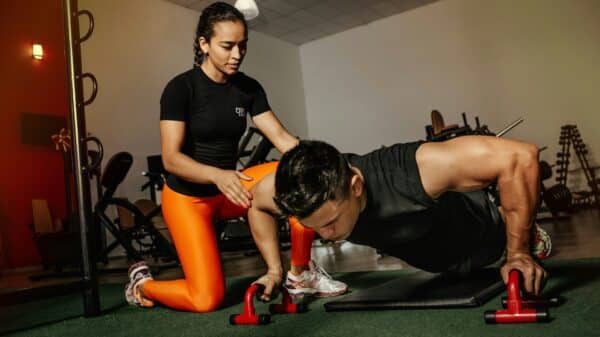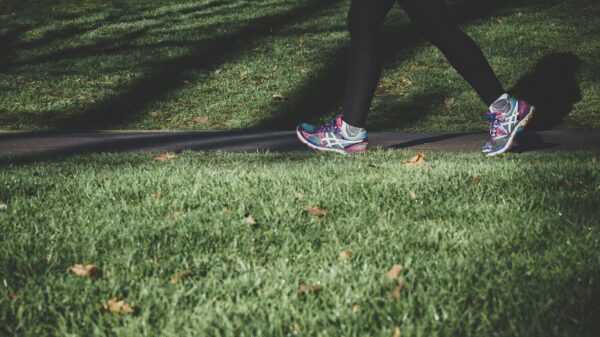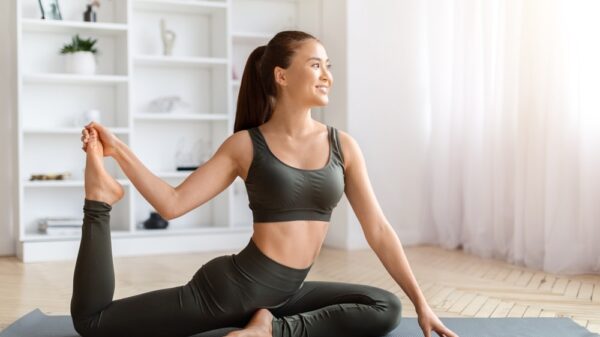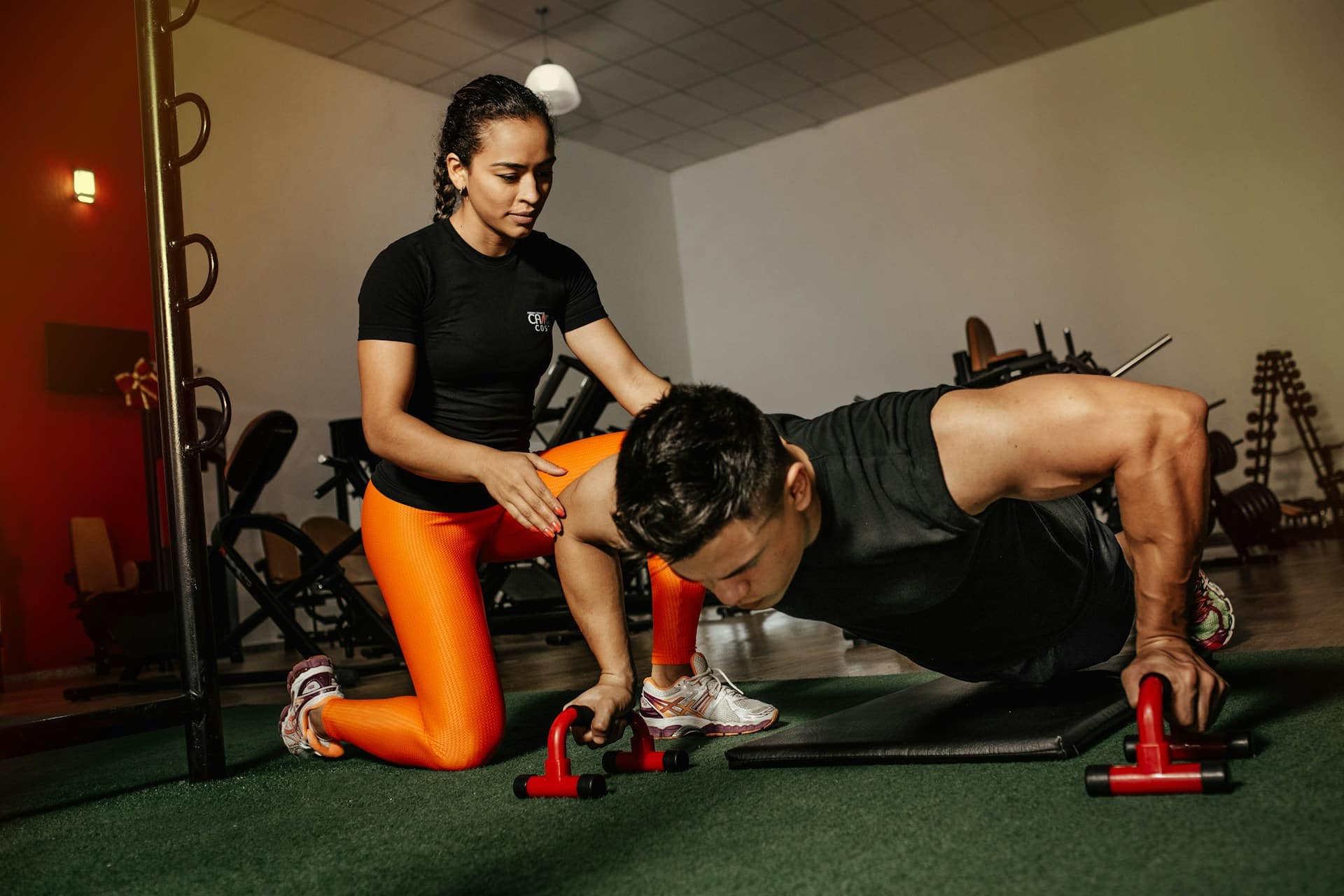Latissimus dorsi muscles, often referred to simply as “the lats,” are the largest and broadest muscles in your back—some might even say they’re the unsung heroes of our upper body. These muscles play a fundamental role in a range of activities, from lifting your arms overhead to providing vital support for your spine and core stability.
When we think about movement, we often picture the arms swinging during a walk or the shoulders lifting weights. The lats are at work behind the scenes, helping ensure that these motions are smooth and effective. But here’s the kicker: even active individuals can find themselves dealing with tight lats. Whether you’re an athlete pushing yourself in the gym or just someone trying to stay active, neglecting to stretch those muscles can lead to chronic shoulder and lower back pain.
If strength training isn’t already a part of your routine, let me be clear—focusing on your lats should be a top priority. A study published in the *Journal of Orthopedics* highlighted that tightness in the lats can lead to poor shoulder function and, ultimately, chronic pain. It’s a cycle; if your lats are tight, they can contribute to issues that extend beyond your back.
As you dive into exercises that target your lats, think of them as a pathway to better balance, increased stability, enhanced range of motion, and upper-body strength. Practically anyone can benefit from including lat-specific movements into their fitness routine.
Let’s get specific. The latissimus dorsi muscles, nestled in the central part of your back, are large, flat muscles located next to the trapezius. They serve as crucial connectors between your spine and upper limbs, supporting overall trunk stability. These muscles extend down to the top of your glutes, which is essential for maintaining a well-aligned posture. If you find yourself slouching at your desk or struggling to stand tall, your lats are likely part of the problem.
To put it simply, your lats are involved in various essential activities, like lifting, reaching, and even keeping your back upright. They help maintain good posture, and when it comes to daily activities like carrying groceries or playing with your kids, strong lats are your best friends.
Now, what exactly do your lats do? They perform some impressive functions:
– Arm Movement: They help raise your arms overhead, backward, and downward. Next time you swing your arms while walking, thank your lats for that fluid motion.
– Adduction: They pull your shoulders towards your midline. In simpler terms, they help bring your arms closer to your body.
– Internal Rotation: They assist in rotating your shoulder joints, providing stability when you’re moving your arms around.
– Core Stability: The lats support your lumbar spine, which means they help prevent back pain during various activities.
So, what do strong lats bring to the table? Here’s the lowdown on the benefits:
1. Stronger Shoulders, Upper Back, and Arms: Our shoulders take a beating daily, whether you’re lifting weights, reaching overhead, or even just carrying a heavy bag. A solid set of lats provides essential support during these actions. If you’re feeling shoulder pain due to age or an injury, keeping your lats strong is a must. Research indicates that weakened lats can intensify discomfort.
2. Core Stability: Think of your core as a fortress. Your lats are a vital part of this defensive structure, which keeps your posture strong and balanced. If you’ve ever struggled with aches from poor posture, it could be time to focus on strengthening your lats. A strong core prevents a cascade of issues like headaches, digestive problems, and even sleep disturbances.
3. Improved Sports Performance: Whether you’re playing a friendly game of basketball or hitting the gym, your lats enhance your performance by facilitating movement and rotation. They’re crucial for actions like twisting and turning, which are common in sports and physical activities.
4. Injury Prevention: With the right strength and flexibility, your lats contribute to a robust support system that guards against injuries, especially in the shoulders and lower back. Balancing strength across your muscle groups ensures you can engage in physical activities without fear of strain or injury.
Incorporating lat exercises into your routine is a straightforward way to bolster not just your strength but also your overall well-being. This investment in your body can make daily activities easier, enhance your athletic performance, and offer long-term health benefits as you age. So why not give those lats the love and attention they deserve?Your latissimus dorsi, or “lats,” play a crucial role in keeping your back strong and flexible. When you think about proper posture and minimizing back pain, it’s essential to understand how your lats support your movements, especially when you’re twisting, bending, or lowering your hips. These muscles work hand-in-hand with your obliques and abdominal muscles, creating a robust framework that supports your spine and allows for a wider range of motion during activities.
If you’re into sports like tennis, golf, gymnastics, swimming, or basketball, then you know just how essential a strong core really is. A stable core not only enhances your performance but also helps you shed unwanted back fat, which is often a concern for many of us. Whether you’re running in the park, hitting the gym, or simply maintaining your daily routine, activities that involve lifting your arms and keeping that core balanced can make a world of difference in how you feel and function.
Understanding the anatomy of your lats can shed light on why they’re so important. The lats connect to the teres major and several stabilizing muscles, playing a significant role in shoulder and arm movement. They originate from the iliac crest (the top of your pelvis) and extend up to the thoracic vertebrae—supporting much of your upper body strength. When you strengthen your lats, you engage a whole host of other muscles, including your shoulders and biceps, to create fluid movement and stability.
However, there are some common issues that arise in the lat region that can lead to discomfort or injury. Weakness in the lats might stem from a variety of factors, including a lack of overhead movement, poor posture, or even long hours spent sitting at your desk. If you’re someone who’s been sitting too much—whether at work or on the couch—this can lead to stiff shoulders and strained back muscles. You might find that poor posture not only gives you back pain but also limits your range of motion and flexibility.
Now, let’s dive into what can happen if your lats aren’t functioning optimally. You might experience shoulder pain because, thanks to their connection between your spine and upper arm, any tightness or weakness can lead to discomfort in your shoulder joints. Back pain is also a common complaint; as your lats support the thoracic and lumbar areas of your spine, any imbalance or weakness can contribute to that nagging pain many of us feel at times.
Muscular imbalances are another challenge—as highlighted by sources like *Men’s Journal*, it’s not unusual to have one lat stronger than the other. This uneven strength can throw off your balance and put unnecessary stress on your spine. Whether you’re older, sedentary, or dealing with weight issues, chances are you’ve felt the effects of a weak back. Thankfully, exercises and regular stretching can help mend those imbalances, improve flexibility, and even enhance your posture over time.
You don’t need to hit the gym or join a yoga studio to strengthen your lats. Even simple bodyweight exercises and stretches can make a significant difference. Incorporating movements like pull-ups or lat stretches can alleviate stiffness and core weakness, leading to better overall health.
By taking the time to understand and strengthen your lats, you’re investing in not just athletic performance, but also your daily wellbeing. It’s about feeling good and moving freely, whether you’re picking up groceries, chasing after kids, or just enjoying life’s many activities. So why not start today? Your back—and your body—will thank you.
When it comes to enhancing your physical strength and overall fitness, targeting major muscle groups, particularly the latissimus dorsi (commonly known as the lats), can make a significant difference. The lats are large muscles located in the upper mid-back and play a vital role in a range of movements that involve your arms and shoulders. To keep your lats strong and functional, consider incorporating a couple of effective exercises into your weekly routine. Aim for 10-15 reps of each exercise and do these sessions one to two times per week. Following your workouts, it’s essential to perform a few stretches to help with flexibility and recovery.
Lat Exercises
Lat Pulldowns Using a Machine
Lat pulldowns are a staple for engaging the lats effectively. Most gyms have a lat pulldown machine that you can use. You can perform the exercise seated or kneeling, depending on which position allows you to maintain a comfortable grip on the bar positioned above your head. As you pull the bar down to your chest, keep your back straight. This ensures that you’re not only working your lats but also maintaining good posture. Then, slowly return the bar to the starting position. Over time, you’ll find this exercise building your strength and endurance.
Lat Pulldowns With Resistance Bands
If you’re looking for an affordable alternative to gym equipment, resistance bands are incredibly versatile. To start, secure a band to a strong anchor point, such as a pole, and hold the ends in both hands. Position your arms straight in front of your head, then pull the band down to your chest by bending your elbows. This not only enhances your lat strength but also helps strengthen your shoulders and core, which is vital for overall body stability.
Chin-Ups
Next up are chin-ups—if you’ve ever tried them, you know they’re challenging but rewarding! Grab a pull-up bar with your palms facing you and arms extended overhead. As you pull your body up towards the bar, keep your body as straight as possible. This exercise is a game-changer for your upper body strength. If you find chin-ups too difficult initially, a bench can provide support under your feet, or you might opt for an assisted pull-up machine at the gym. Start with fewer reps and build up as your strength increases!
Seated Rows
A seated row machine can be fantastic for hitting your lats while also engaging your biceps and shoulders. With knees slightly bent and back straight, pull the handles toward you by bending your elbows and drawing your shoulder blades together. The controlled movement not only strengthens your lats but also improves your posture—something we can all benefit from!
Dumbbell One-Arm Rows
For this exercise, stand beside a bench with one knee and one hand resting on it. Hold a dumbbell in your opposite hand. Keeping your torso straight, pull the dumbbell towards your side, focusing on using your lats for the lift. This not only builds strength but also helps improve balance and coordination.
Laying Trunk Lifts (Supermans)
To target your back further, consider doing Superman lifts. Lay on the floor with your fingers laced behind your head and lift your upper body off the ground, engaging your back muscles. Ensure that your legs remain grounded, or slightly lift your feet for an extra challenge. This movement not only strengthens your lats but also helps bolster your core stability.
Yoga Chair Pose (Held Squat)
Finally, let’s incorporate some yoga into your routine. The chair pose is excellent for opening up the lats while also improving balance. Stand with your feet together and lift your arms overhead. As you sink your hips back, imagine sitting in a chair while maintaining a straight back. This pose not only stretches your lats but also strengthens your legs and core, making it a well-rounded addition to your workout.
Lat Stretches
Standing Overhead Reach
After your workout, don’t skip the cooldown! A simple yet effective way to stretch your lats is with an overhead reach. Stand tall and extend your arms above your head, gently bending from side to side. This movement helps elongate the lats and releases any tension built during your workout.
Cat-Cow or Kneeling Arm Stretches
These dynamic stretches can help relieve upper back tension. While on your knees, extend your arms overhead and reach with your fingertips, allowing your back to stretch. Alternatively, you can transition between all fours, arching your back (cat pose) and then lowering your belly while lifting your head and tailbone (cow pose). Hold each position for 10 to 30 seconds while breathing deeply to allow your muscles to soften and release tension.
Precautions
It’s crucial to listen to your body. If you experience any pain during your workouts or soreness that lasts more than a few days, allow your body some time to recover. Start with lighter weights and focus on proper form rather than pushing your limits. If you notice swelling or persistent discomfort, it may be time to consult a health professional, such as a doctor or physical therapist.
Final Thoughts
- The latissimus dorsi muscles are not just critical for aesthetics—they are essential for everyday movement, arm extension, and providing core stability.
- Weak lats can lead to discomfort, especially if you lead a sedentary lifestyle or overtrain without stretching. This can manifest as chronic back pain or shoulder tension.
- Including specific exercises for the lats, like pulldowns, chin-ups, and rows, can bolster your strength and overall physique.
Image Source: Unsplash

































